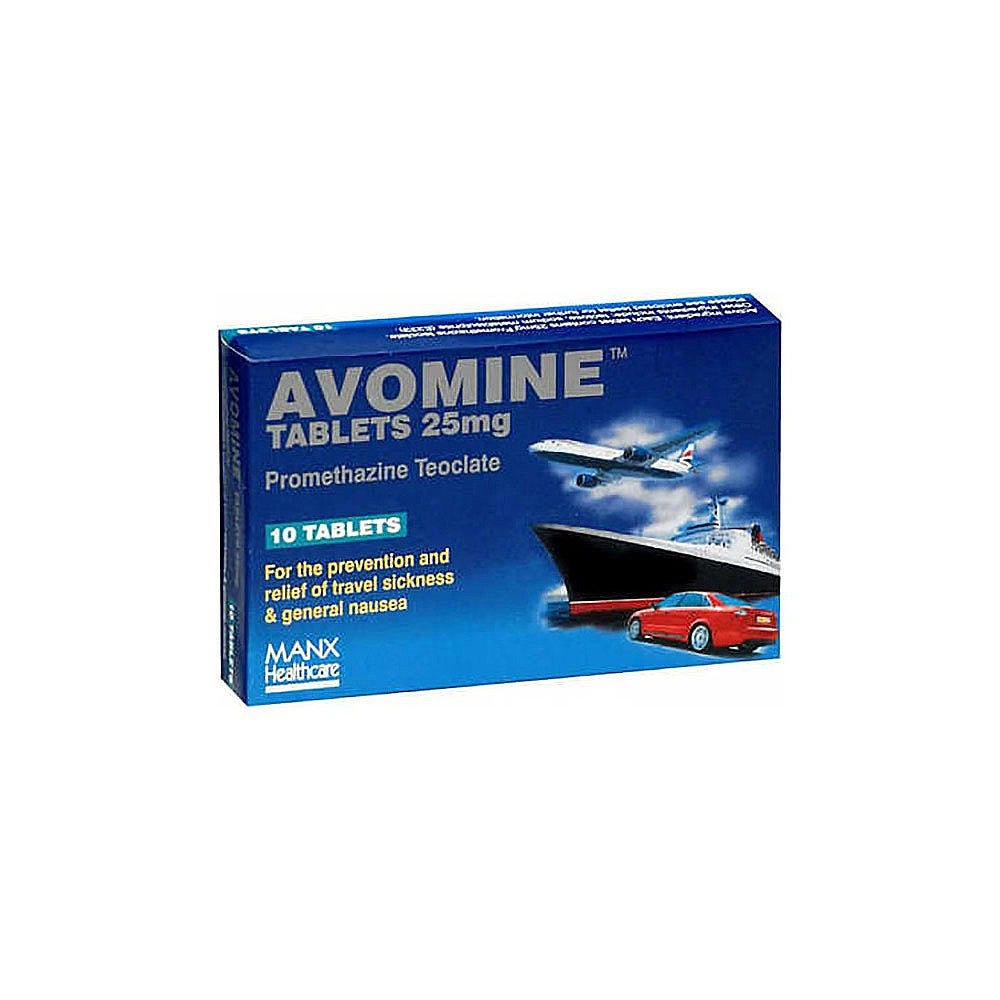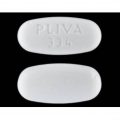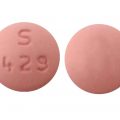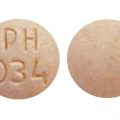What is Avomine (promethazine)?
Phenergan is a brand of promethazine, a medication used to treat several conditions, including allergies, motion sickness, nausea and vomiting, anxiety before surgery, and pain after surgery. It’s also used as a sleep aid, including before and after surgery.
This drug may be used as part of combination therapy. That means you may need to take it with other medications. Phenergan comes as an oral tablet, an oral solution, an injectable solution, and a rectal suppository.
Phenergan oral tablet is only available as a generic drug. Generic drugs usually cost less than brand-name versions. It is also known by the trade name Sominex.
How it works
Avomine (promethazine) belongs to a class of drugs called phenothiazines. A class of drugs is a group of medications that work in a similar way. These drugs are often used to treat similar conditions.
Avomine (promethazine) works by preventing the release of a substance called histamine from certain cells in your body. Histamine is normally released when you’re exposed to things you’re allergic to, such as pollen, dander, mold, or chemicals.
By preventing the release of histamine, this drug causes sleepiness and helps with pain control. This is because histamine helps regulate wakefulness and helps to keep you alert and your senses heightened.
This drug also works to reduce stimulation of the part of your brain that sends signals to make you vomit.
How should Avomine (promethazine) be used?
Promethazine comes as a tablet and syrup (liquid) to take by mouth and as a suppository to use rectally.
Typical dosing for promethazine
- Allergies: Promethazine can be taken in a few different ways to treat allergies. You can take 25 mg by mouth or rectally at bedtime OR 12.5 mg by mouth or rectally before meals and at bedtime OR 6.25 to 12.5 mg by mouth or rectally 3 times a day as needed.
- Allergic reactions: The typical dose is 25 mg injected into a muscle as soon as possible after the reaction starts. This can be repeated every 2 hours if needed.
- Motion sickness in adults: The typical dose is 25 mg by mouth or rectally 30 to 60 minutes before traveling. You can repeat this every 8 to 12 hours as needed. If you need to take it daily (for example, while on a cruise), you would typically take 25 mg by mouth or rectally two times a day (first thing in the morning and after your evening meal).
- Motion sickness in children: The typical dose is 12.5 to 25 mg by mouth or rectally up to twice a day.
- Nausea and vomiting in adults: The typical dose is 12.5 to 25 mg by mouth, rectally, or injected into a muscle every 4 to 6 hours as needed.
- Nausea and vomiting in children (dose based on weight): The typical dose is 0.5 mg per pound of body weight by mouth or rectally. It should be given as little as possible, but no more than every 4 hours.
- Sedation in adults: The typical dose is 25 to 50 mg by mouth, rectally, or injected into a muscle before sleep. If you are taking this to treat anxiety before surgery, the dose is usually 50 mg by mouth or rectally the night before your procedure.
- Sedation in children: The typical dose is 12.5 to 25 mg by mouth, rectally, or injected into a muscle before sleep.
- Anesthesia: The typical dose is 25 to 50 mg injected at the same time as other anesthesia medications. This dose might be changed or repeated by your surgeon or anesthesiologist.
Follow the directions on your prescription label carefully, and ask your doctor or pharmacist to explain any part you do not understand. Take promethazine exactly as directed. Do not take more or less of it or take it more often than prescribed by your doctor.
Promethazine suppositories are for rectal use only. Do not try to swallow the suppositories or insert them into any other part of your body.
If you are taking promethazine liquid, do not use a household spoon to measure your dose. Use the measuring spoon or cup that came with the medication or use a spoon made especially for measuring medication.
To insert a promethazine suppository, follow these steps:
- If the suppository feels soft, hold it under cold, running water for 1 minute. Remove the wrapper.
- Dip the tip of the suppository in water.
- Lie down on your left side and raise your right knee to your chest. (A left-handed person should lie on the right side and raise the left knee).
- Using your finger, insert the suppository into the rectum, about 1/2 to 1 inch (1.25 to 2.5 centimeters) in children who are 2 years of age older and 1 inch (2.5 centimeters) in adults. Hold it in place for a few moments.
- Stand up after about 15 minutes. Wash your hands thoroughly and resume your normal activities.
Other uses for this medicine
This medication may be prescribed for other uses; ask your doctor or pharmacist for more information.
Can a pregnant or breastfeeding woman take Avomine (promethazine)?
No, pregnant women and breastfeeding mothers should avoid taking Avomine (promethazine) because exposing an unborn child to Avomine (promethazine) two weeks to delivery may lead to temporary changes to the baby’s nervous system that can affect their behavior for a few days after birth. The baby may cry more, be jittery, respond differently to stimuli, and be harder to settle.
What are the side effects of Avomine (promethazine)?
Avomine (promethazine) can cause side effects. Tell your doctor if any of these symptoms are severe or do not go away:
- abnormally happy mood
- blurred or double vision
- difficulty falling asleep or staying asleep
- dizziness
- drowsiness
- dry mouth
- hyperactivity
- itching
- listlessness
- loss of coordination
- nausea
- nervousness
- nightmares
- restlessness
- ringing in ears
- stuffy nose
- vomiting
Some side effects can be serious. If you experience any of the following symptoms, call your doctor immediately:
- abnormal neck position
- abnormal or uncontrollable movements
- breathing stops for a short time
- confusion
- decreased alertness
- difficulty breathing or swallowing
- faintness
- fast or irregular pulse or heartbeat
- fever
- hallucinations (seeing things or hearing voices that do not exist)
- hives
- hoarseness
- inability to respond to people around you
- overwhelming or unmanageable fear or emotion
- rash
- seizures
- slowed breathing
- sore throat, fever, chills, and other signs of infection
- stiff muscles
- sweating
- swelling of the face, eyes, lips, tongue, throat, arms, hands, feet, ankles, or lower legs
- tongue sticking out
- uncontrollable shaking of a part of the body
- uncontrolled eye movements
- unusual bruising or bleeding
- wheezing
- yellowing of the skin or eyes
If you experience a serious side effect, you or your doctor may send a report to the Food and Drug Administration’s (FDA) MedWatch Adverse Event Reporting program online (http://www.fda.gov/Safety/MedWatch) or by phone (1-800-332-1088).
Avomine (promethazine) may cause other side effects. Call your doctor if you experience any unusual problems while you are taking this medication.
What medications can interact with Avomine (promethazine)?
Tell your doctor and pharmacist what prescription and nonprescription medications, vitamins, nutritional supplements, and herbal products you are taking or plan to take. Be sure to mention any of the following: antidepressants (‘mood elevators’) such as amitriptyline (Elavil), amoxapine (Asendin), clomipramine (Anafranil), desipramine (Norpramin), doxepin (Adapin, Sinequan), imipramine (Tofranil), nortriptyline (Aventyl, Pamelor), protriptyline (Vivactil), and trimipramine (Surmontil); antihistamines; azathioprine (Imuran); barbiturates such as phenobarbital (Luminal); cancer chemotherapy; epinephrine (Epipen); ipratropium (Atrovent)medications for anxiety, irritable bowel disease, mental illness, motion sickness, Parkinson’s disease, seizures, ulcers, or urinary problems; monoamine oxidase (MAO) inhibitors such as isocarboxazid (Marplan), phenelzine (Nardil), tranylcypromine (Parnate), and selegiline (Eldepryl, Emsam, Zelapar); narcotics and other pain medication; sedatives; sleeping pills; and tranquilizers. Your doctor may need to change the doses of your medications or monitor you carefully for side effects.







